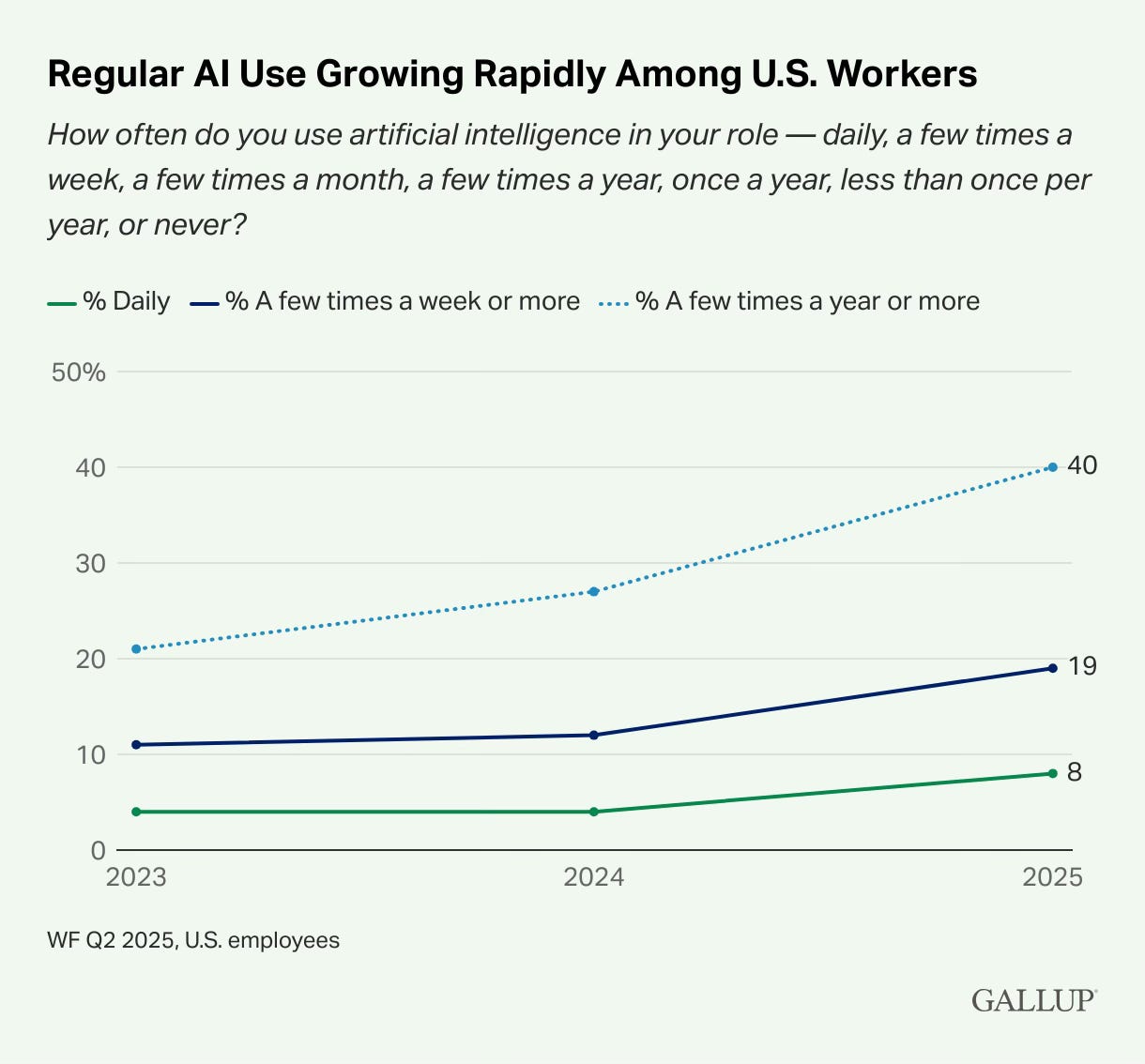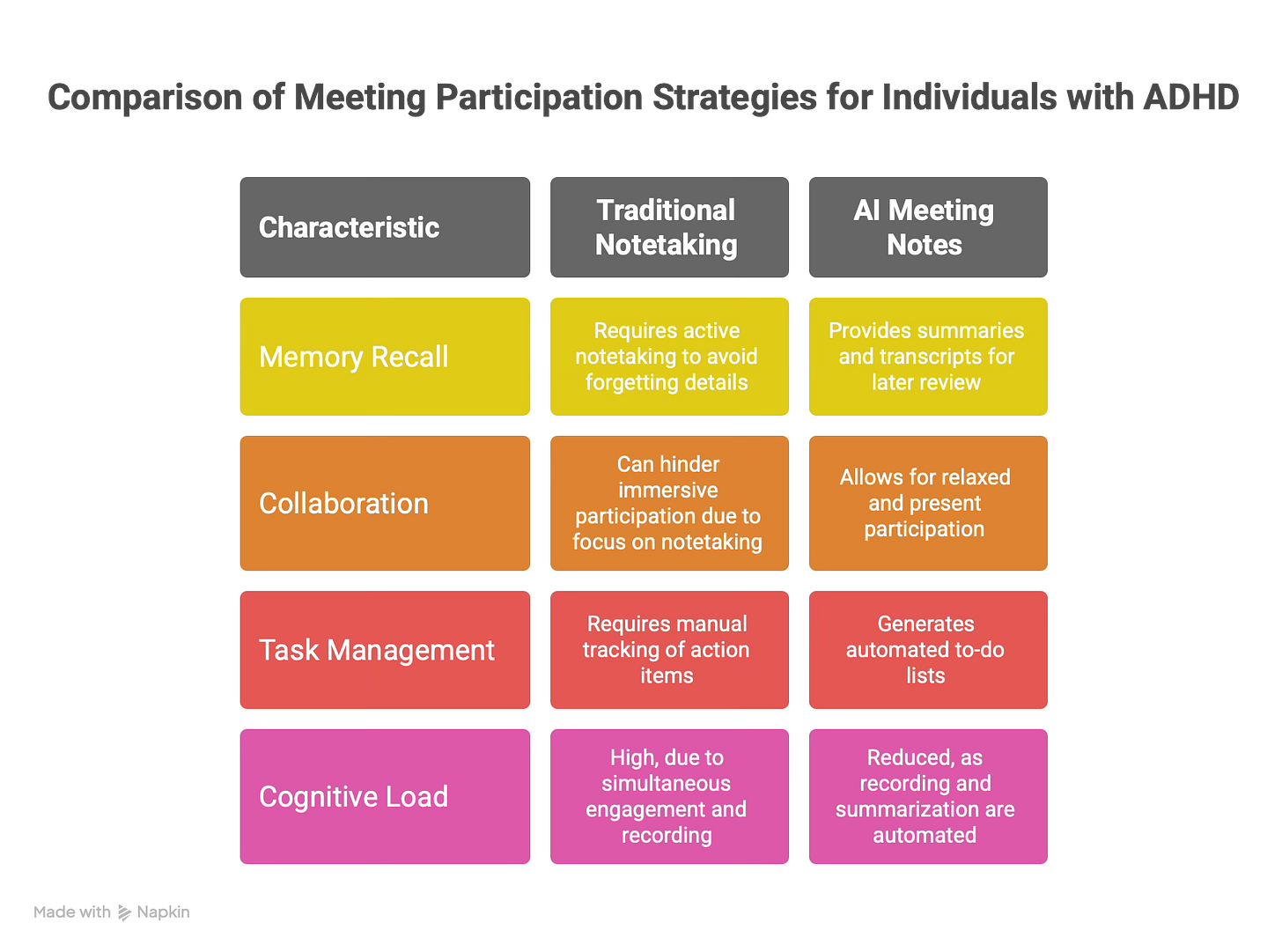How to ADHD with AI at work: Meeting Notes
In March, I got my first question from a potential client about my use of AI. A longtime skeptic, I’d just begun using Anthropic’s Claude, and was still experimenting with where I could implement AI tools to save time or eliminate boring, repetitive tasks. Around the same time, my task management application introduced an AI meeting notes feature, so I decided to give those a whirl, too.
Gallup reports that AI use at work has doubled since they first measured it in 2023. This year, all except for one of my consulting clients are using at least one AI tool in some capacity.
At first, I used Claude primarily for writing Regex, debugging SQL, and inquiring about what kinds of frogs or toads live in southern Delaware. Now, I’ve experimented with a variety of tools, from ChatGPT to Napkin, and I’ve integrated a few of them into my daily work. In this series of blog posts, I’ll share a couple of use cases where I’ve found AI tools to be really helpful.
Meeting Notes
Many individuals with ADHD have challenges related to working memory and short-term memory. Memory problems have been the single most difficult ADHD-related challenge I face, so I must have meeting notes. (Yes, I could watch a recording. But I loathe spending 30 minutes to an hour watching a meeting I already attended once.)
Collaboration is critical to many of my projects, so I want to participate. I enjoy solving a problem together with a team, having cross-functional discussions about data governance, and sketching together in Figma in real time. A productive working session can feel like hyperfocus, so maybe it’s unsurprising that I rarely take any meaningful notes after the first five minutes of a meeting. (And when I do, they’re indecipherable because I was trying to stay engaged and write or type at the same time.)
In meetings focused on planning and decision-making, I’ve had to learn to choose note-taking over immersive participation, because I might forget an urgent action item or important business requirement.
Until AI meeting notes entered the chat. Now…
My calendar and task management app, Amie, automatically starts recording when a meeting starts, it transcribes the audio, summarizes the discussion, generates a to-do list for me, then emails me the files. After a few sessions, I began to trust the output enough to relax and really be present in meetings. I can participate without worrying about forgetting details. I know I can check the summary or transcript later if I need to.
I started using Amie meeting notes in February, and they’re getting more accurate, faster, and more feature-rich all the time. Recently, Amie started identifying different speakers, summarizing the actions they each plan to take, and (optionally) emailing all attendees a summary. An area is provided for private notes, too.
If you’d like to start using AI meeting notes as an individual contributor, check with your manager or IT team to find out if your organization already owns a tool you can use. A number of common tools, like Zoom, have introduced this feature. And let me know if there are AI tools you’ve found that improve your workday. I’d love to check them out.



